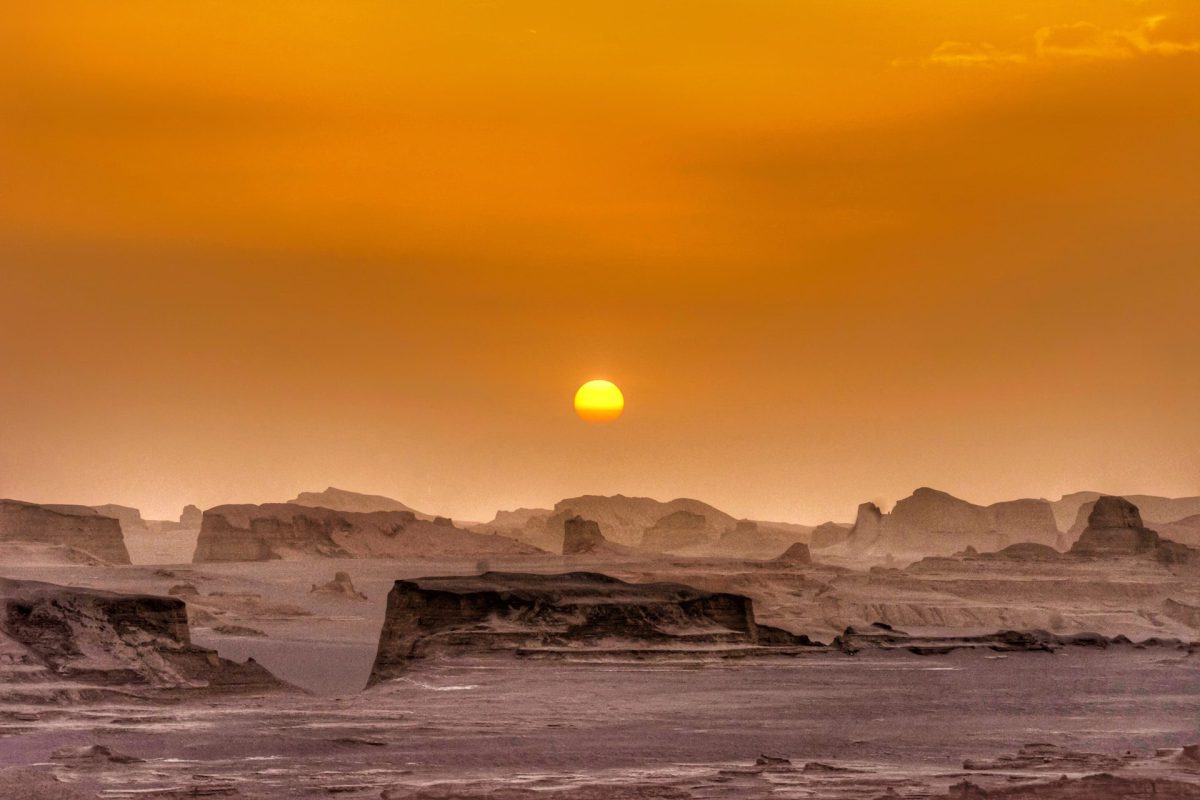Table of Contents
Discover the mystical and mesmerizing beauty of the deserts in Iran, where nature has crafted awe-inspiring landscapes that are unlike any other. From the vast and arid salt flats of Dasht-e Kavir to the rugged and stunning dunes of Rig-e-Jenn, these deserts are not only breathtaking to behold but also rich in culture and history.
Whether you’re a nature enthusiast, an adventure seeker, or a culture buff, exploring Iran deserts is an experience that should not be missed. Join us as we take you on a journey through some of the most stunning deserts in Iran, where you can witness the magic of nature and immerse yourself in the vibrant culture of this beautiful country. Here is the list of Deserts in Iran:
1. Lut Desert
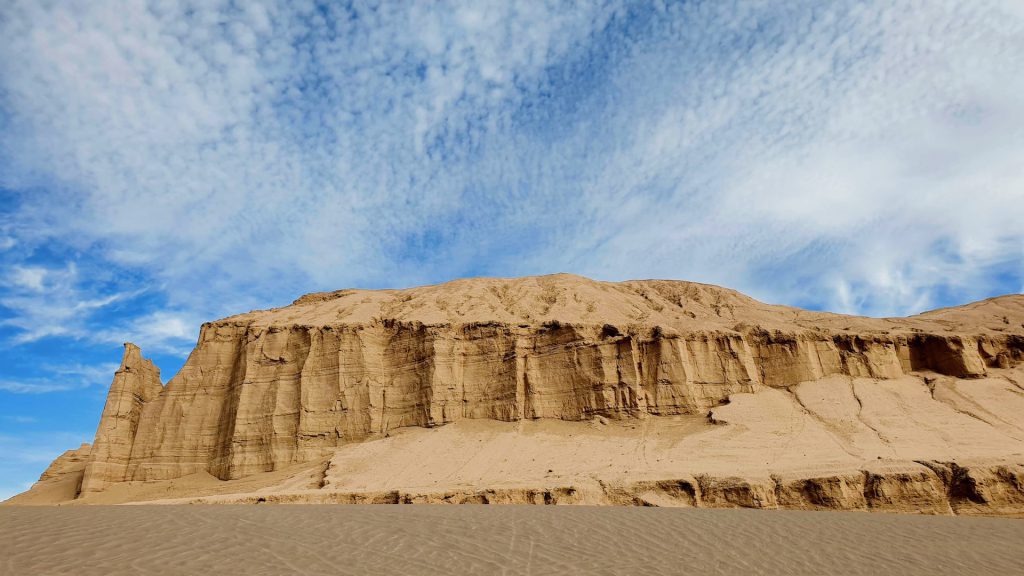
Kavir-e Lut, also known as Dasht-e Lut or Lut Desert, is a natural wonder in Iran that is recognized as a UNESCO World Heritage site. Lut Desert is a unique and stunning natural phenomenon, covering an area of around 51,800 square kilometers with a maximum annual rainfall of just 100 mm. The average altitude of the desert is approximately 600m above sea level, with the lowest point near “khabis” being almost 300m above sea level. Lut Desert is the hottest desert in Iran.
The desert’s central part has been shaped and molded by the wind, forming a series of parallel ridges and furrows, while the eastern part is a low plateau covered with salt flats. Kavir-e Lut is located in three provinces of Iran, including Sistan and Baluchestan, Kerman, and South Khorasan. The desert’s most remarkable sights and attractions are in Kerman Province, particularly near the city of Kerman and in the enchanting Shahdad Village.
Visitors to Kavir-e Lut can stay in one of the many eco-lodges available in Shahdad Village and experience the mystical and otherworldly beauty of the desert. The sunlight in Kaluts is particularly awe-inspiring, and visitors can enjoy the stunning views and take memorable photographs in this stunning natural wonder. If you are looking for a unique and mystical experience in Iran, then exploring the Kavir-e Lut is an adventure that should not be missed.
2. Dasht-e Kavir
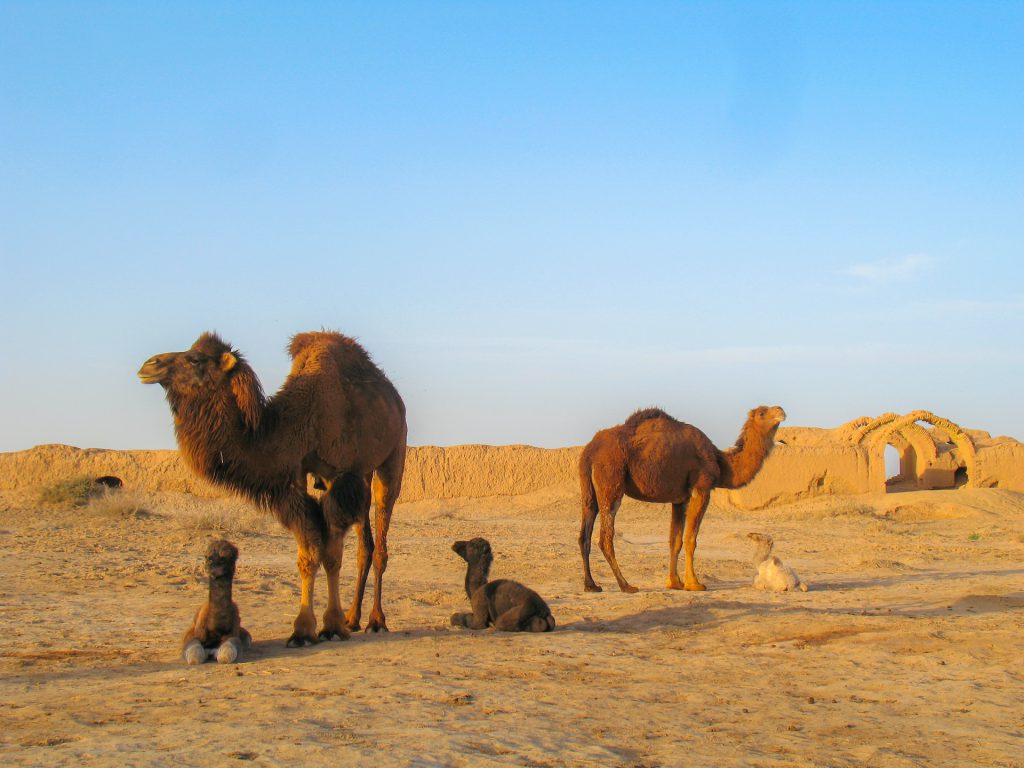
Located in the central plateau of Iran, Dasht-e Kavir, also known as Kavire Namak, is an awe-inspiring salt desert in Iran that stretches over an area of around 77,600 square kilometers. The desert is surrounded by the magnificent Alborz Mountains, which provide a stunning backdrop to this natural wonder. The temperatures in this desert can soar to a scorching 50°C during summer, while the winter months can be quite cold, making it a challenging terrain for life to thrive.
Despite the harsh conditions, the Dasht-e Kavir boasts a unique and diverse ecosystem, which is home to species of wild sheep, camels, goats, and Persian leopards that are found in the mountainous regions. The desert is also home to the Persian gazelle, which inhabits the steppe and desert areas of the central plateau. The vegetation in this area is sparse, with only species of shrubs, grasses, and Mugwort that can withstand the arid and salty terrain.
Visitors can access the Dasht-e Kavir from various towns and villages such as Aran and Bidgol, Choopanan, Mesr Village, Khor and Biabanak, Naeein, Jandagh, and Garmeh Village. Some of the must-visit attractions in the area include Kavir National Park, Houze Soltan, Houze Ghilooghe, Sefidab Caravanserai, and Sirjan Salt Swamp. For those seeking a unique and mesmerizing experience, exploring the vast and magnificent Dasht-e Kavir is a must-do when visiting Iran.
3. Maranjab Desert
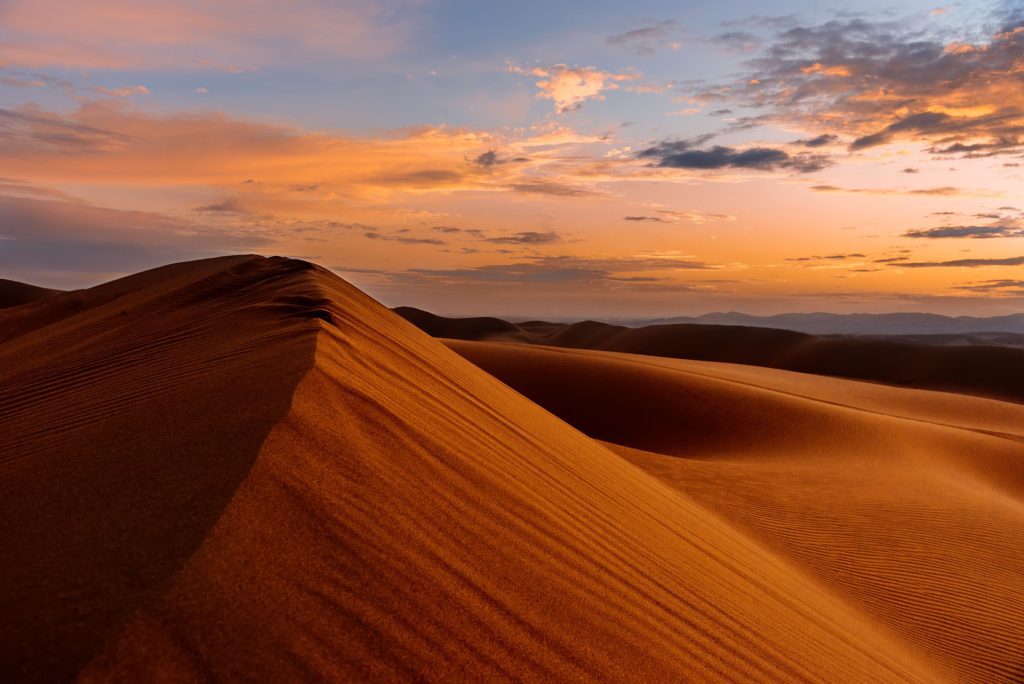
Exploring the vast Maranjab Desert is an experience that you’ll never forget. Situated in the eastern part of Qom, this salt lake is one of the must-see Iranian deserts. Covering an area of 1800 km², the Maranjab Salt Lake has a distinctive triangle shape that adds to its beauty. It’s an ideal place to witness the stunning natural beauty and escape the hustle and bustle of the city and that’s why Maranjab Desert Tours are so famous among all Iran tourists.
The salt lake isn’t just a natural wonder, but it also serves as a source of salt extraction. However, if you’re planning to visit, it’s best to go with a professional guide as the surrounding lands are swampy. Additionally, there are many other sights to see in the Maranjab Desert, such as the Maranjab Castle, a Caravanserai, and a Qanat next to it. Don’t forget to explore the impressive sand dunes and the nearby Aran and Bidgol Salt Lake. With so much to see and do, a visit to Maranjab Desert, one of the best Iranian deserts, will be an unforgettable adventure.
4. Rig-e Jenn Desert
Rig-e-Jenn Desert is known for its impressive sand dunes and rugged terrain, making it a popular destination for those who enjoy outdoor activities such as hiking, trekking, and off-road driving. This desert in Iran is also home to unique flora and fauna, including desert foxes, gazelles, and a variety of birds.
In addition to its natural beauty, the area is rich in history and culture. There are several ancient sites in the area, including the ruins of a caravanserai (a type of inn used by traveling merchants), a Sassanid-era castle, and the remains of a 6th-century settlement.
Despite its remote location, Rig-e-Jenn Desert has become an increasingly popular tourist destination in recent years, attracting visitors from all over the world. The best time to visit is during the cooler months between October and April, when the weather is more pleasant for outdoor activities.
5. Mesr Desert
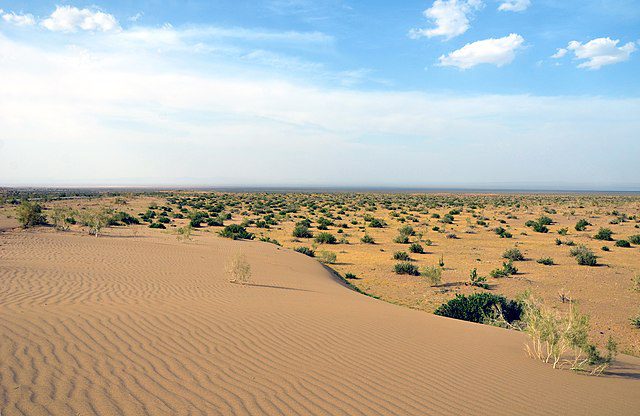
Mesr Desert, located in the Isfahan province, is a unique and breathtaking desert village that attracts numerous tourists every year. Despite the extreme hot and arid weather, the area is adorned with majestic gardens and date palm trees, making it a one-of-a-kind desert in Iran. Mesr Desert tours have become increasingly popular among tourists from Tehran and nearby cities, who come to witness the beauty of the desert and partake in various outdoor activities such as camel riding, safari, and trekking in sand dunes.
One of the most alluring features of Mesr Desert is the stunning night sky, which is an unforgettable sight to behold. Accommodation is easily available in the nearby villages of Mesr and Farahzad, where visitors can stay for a night or a few days to explore the attractions of the area. Khur Salt Lake, beautiful date gardens, and Chal Eskanon are some of the places that tourists can visit to make the most of their trip to Mesr Desert. If you’re looking for a unique and unforgettable desert experience, Mesr Desert should definitely be on your list of places to visit.
6. Halvan Desert
Halvan Desert, located near Tabas, is a stunning tourist attraction that captivates visitors with its breathtaking natural scenery and unique architecture. The area is renowned for its magnificent date gardens, which is a rare sight to behold in a desert. The village is adorned with an awe-inspiring castle at its center, making for a great spot for photography enthusiasts.
Accessing the Halvan Desert and its spectacular sand dunes is easy, as the best way to get there is from Tabas. The area is covered with sand and situated in the eastern and northern parts of the salt marshland, the central desert marshes, and the Salt Khor Lake. Visitors can navigate the sand dunes on foot or take a thrilling safari ride in a vehicle.
If you’re a star-gazing enthusiast, Halvan Desert is the place to be. This area is one of the most popular destinations for people interested in observing the night sky and stars. You’ll be amazed by the clarity of the sky and the visibility of the stars in the silent and peaceful desert atmosphere.
7. Shahdad Desert
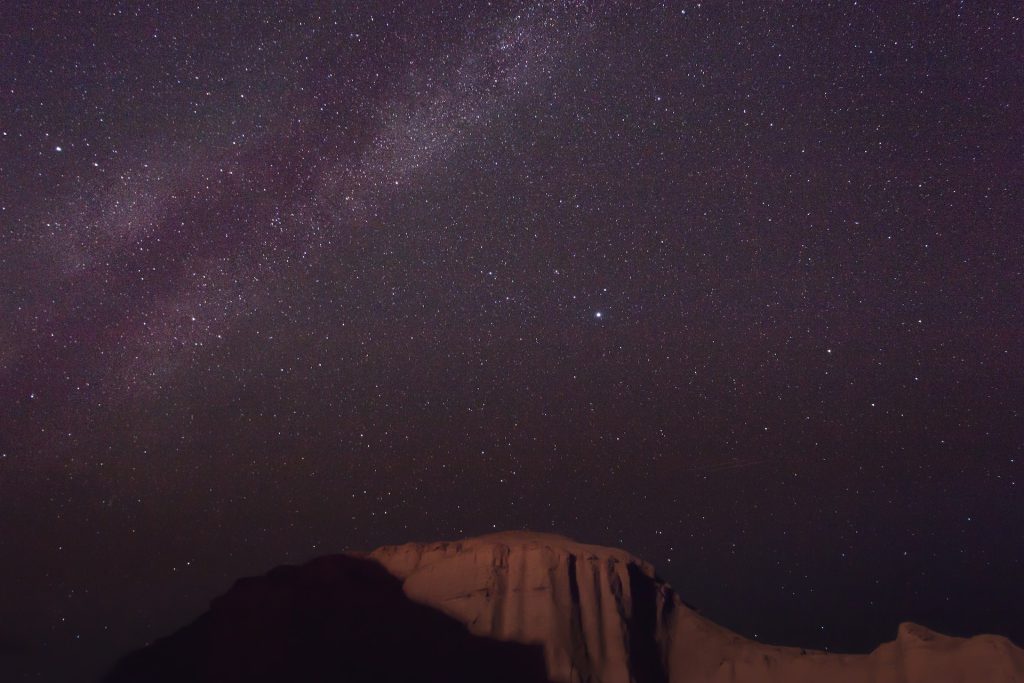
Shahdad Desert is one of the best Iranian deserts that is like no other with breathtaking scenery that leaves you in awe. Located in the eastern part of Kerman city, the desert is home to the magnificent Kaluts. These otherworldly structures have been created by extreme soil and water erosion and stretch from the northwest to the southeast of the district. The best time to witness this magnificent work of nature is from December to March when the weather is mild and pleasant.
Apart from the natural beauty, Shahdad Desert has many historical and cultural attractions to explore. The ancient castles and water reservoirs in the area are a testament to the human civilization that once thrived in this harsh environment. And if you are a stargazing enthusiast, don’t miss the opportunity to observe the night sky in Shahdad Desert from June to September, when the sky is clear and bright. Whether you’re an adventure seeker, a history buff or just looking to escape the hustle and bustle of city life, Shahdad Desert has something to offer for everyone.
8. Varzaneh Desert
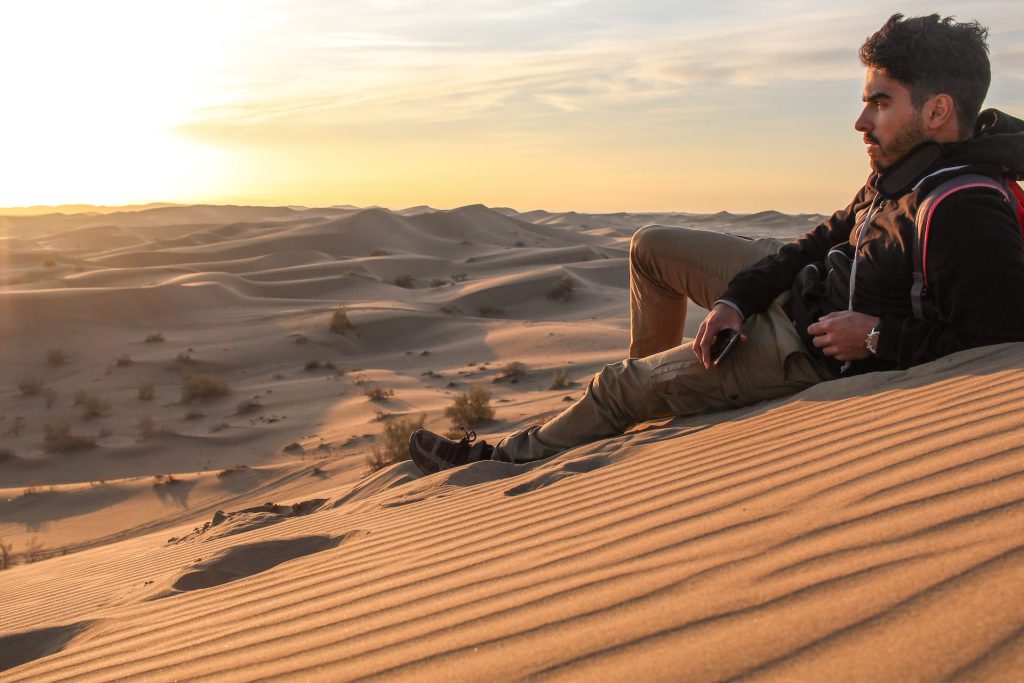
Varzaneh Desert, located in the central desert of Iran, offers a unique experience for tourists seeking to immerse themselves in the beauty and serenity of nature. Its mesmerizing sand dunes, stretching as far as the eye can see, make it a popular destination for camping and desert safaris. One of the highlights of this area is the opportunity to stargaze at night, under a blanket of stars that seem almost close enough to touch.
Nearby, the ancient village of Kharanagh adds an extra layer of historical charm to the trip. Built entirely of mud bricks, this village has stood for over a thousand years and offers stunning views perfect for photography. The Kharanagh caravanserai, with its impressive architecture dating back to 400 years ago, is also a must-see for those interested in history.
In addition, Varzaneh offers a variety of attractions to explore, such as the Pigeon Towers, Anahita Temple, Ghoortan Citadel, and Mirmiran House. The Gavkhooni Wetland, a natural habitat for a variety of migratory birds, provides a unique opportunity for birdwatchers to observe and photograph the diverse wildlife. The Historical Bridge and Jameh Mosque of Varzaneh are also worth visiting to explore the rich history and cultural heritage of the region. Whether it’s adventure, history, or nature that you seek, Varzaneh Desert has something for everyone.
9. Darak Desert
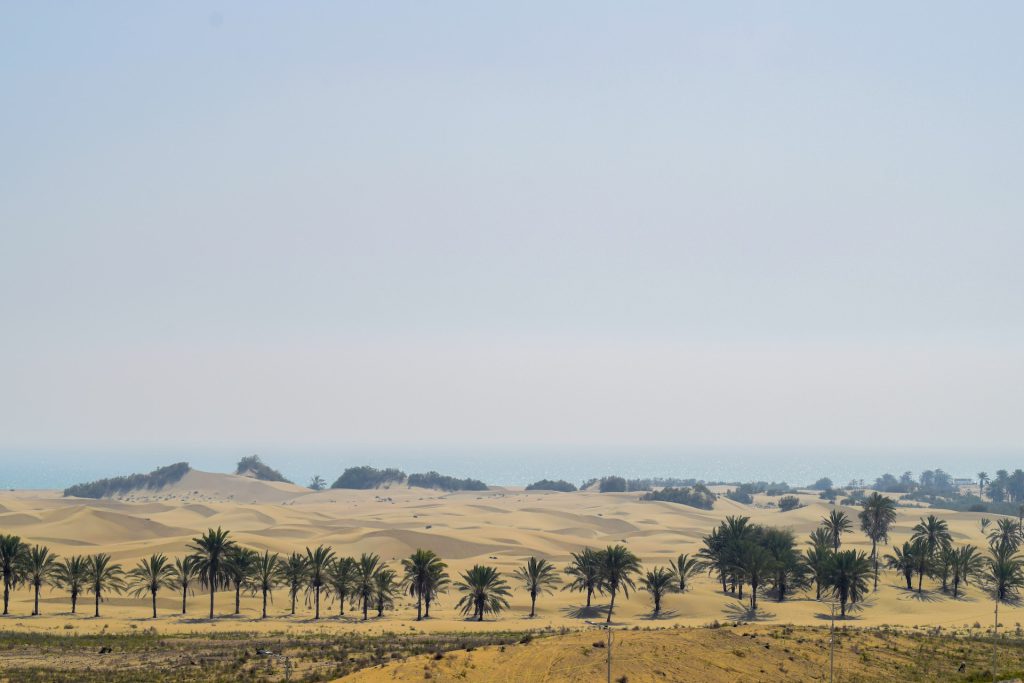
Situated in Iran’s Sistan and Baluchestan Province, the Darak Desert beckons as one of the best Iranian deserts. Its charm lies in the fact that few travelers have stumbled upon its pristine shores. Here, tranquility reigns supreme, with the soothing rhythm of ocean waves as your constant companion. The desert’s pièce de résistance is where it meets the sea – an awe-inspiring spectacle where the Indian Ocean and the Sea of Oman blend their turquoise waters in breathtaking harmony.
Darak, named after the nearby hamlet, sits snugly between the bustling ports of Bandar Abbas and Chabahar. The village, aptly named “Darak,” translates to “dwelling by the sea” in the local dialect. For an added touch of magic, visit in March when vibrant plankton transforms the coastlines into a vivid canvas against the backdrop of golden sands.
Beyond the desert’s allure, the charming Darak Village, nestled along the Makran coast, offers a unique phenomenon: freshwater wells coexist with the salty sea. Whether you seek water sports like surfing and boating or prefer desert adventures like stargazing and hiking, Darak welcomes you to explore its extraordinary meeting point of desert and sea.
10. Karakal Desert
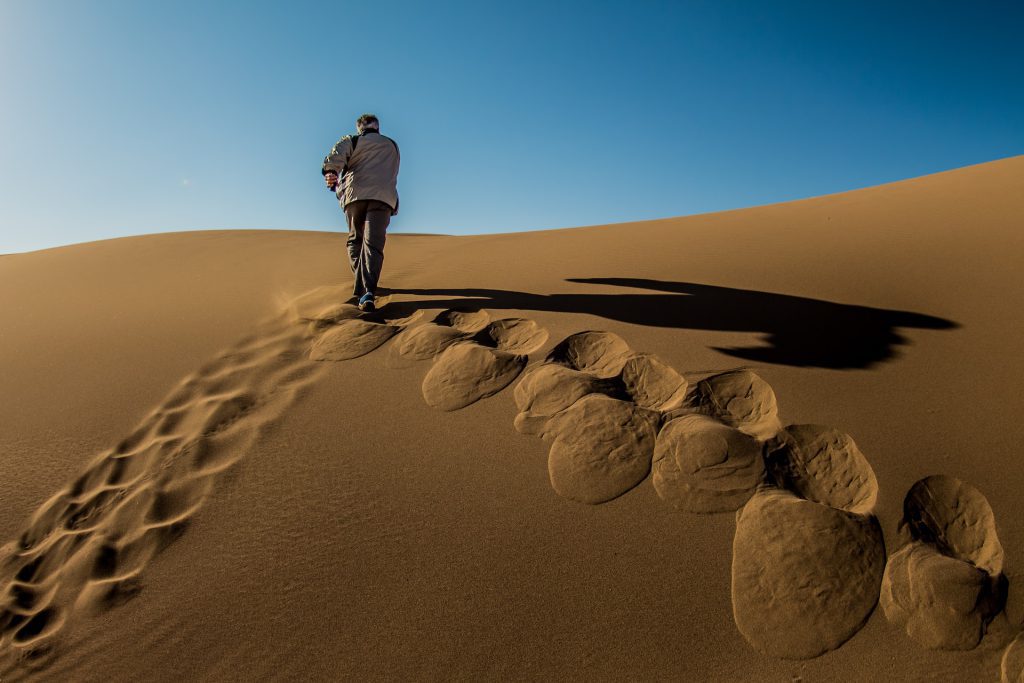
The Karakal Desert in Iran, located near Sadeqabad Village in Bafq city, is a captivating Iranian desert just 750 kilometers away from Tehran. You might be wondering about its name, “Karakal.” Well, it’s named after a desert cat that calls this place home. To reach this desert, take a journey from Tehran through Qom, Kashan, Yazd, and Bafq, and you’ll find yourself in this arid wonderland.
As you approach Sadeqabad Village, you can’t miss the Bagherabad Castle, built during the Qajar dynasty. It was used to protect the village. However, the real star of Yazd Province is the stunning Karakal Desert. While exploring the province’s historic treasures, make sure to include a visit to this desert in your plans. It’s an opportunity to experience Iran’s wild beauty and history all in one place.
FAQs about Deserts in Iran
Q1: Does Iran have any deserts?
A1: The Lut Desert is located in the southeastern part of the Islamic Republic of Iran. It’s a dry and hot region known for its impressive and diverse desert landscapes.
Q2: Is Persia mostly desert?
A2: Iran, like many other Middle Eastern countries, has a lot of dry, empty desert land. Here’s a fact: Iran’s geography is quite different from its neighboring countries. For example, while Saudi Arabia is mostly desert (95%), Turkmenistan is mostly desert (80%), and Iraq has a significant amount of desert (40%), only about 22% of Iran’s land is desert.
Q3: How many deserts are in Iran?
A3: In Iran, there are two big deserts and several smaller ones. But if you take a closer look at Iran’s map, you’ll see that apart from the deserts, about one-third of the country is covered in mountains. There are also forests, lakes, and many rivers in various parts of the country.
Q4: What is the biggest desert in Iran?
A4: The Great Salt Desert, known as Dasht-e Kevir, is the biggest desert in Iran. It’s mostly a barren and empty area made up of mud and salt marshes. There are layers of salt that help retain what little moisture is there, preventing it from evaporating completely.
Q5: What are the two largest deserts in Iran?
A5: Dasht-e Lut is one of the biggest Iranian deserts, measuring 480 kilometers (300 miles) in length and 320 kilometers (200 miles) in width. It’s known as one of the driest spots on Earth. This desert covers an area of about 51,800 square kilometers (20,000 square miles), making it the largest desert in Iran after Dasht-e Kavir.
Q6: What is the hottest desert in Iran?
A6: Lut Desert holds the record for having not only the hottest desert in Iran but also the hottest spot ever recorded on Earth’s surface, as confirmed by NASA’s satellite data on land surface temperature. In 2005, it reached a scorching 70.7°C (159.3°F), and the Lut Desert has claimed the title of the hottest place on Earth on multiple occasions in different years since then.
Q7: Does Tehran have a desert?
A7: The Maranjab Desert is one of the most stunning deserts in Iran. It’s situated near the city of Kashan and features different types of climates.
Experience the Best Deserts in Iran with a Customized Tour
If you’re planning to visit the deserts of Iran, it is highly recommended that you book a customized tour package. Iran is known for its diverse landscape and rich cultural heritage, and the best way to experience it is through a tailor-made tour that meets your individual preferences and requirements.
To Iran Tour is a reputable travel agency that specializes in organizing Iran tours and travel packages. Our experienced tour guides have an in-depth knowledge of the country’s history, culture, and geography, and are passionate about sharing it with visitors from all over the world.
So, if you want to experience the best of the Iranian deserts, To Iran Tour will design the plan according to your preferences and offer you a seamless travel experience that you will never forget.

